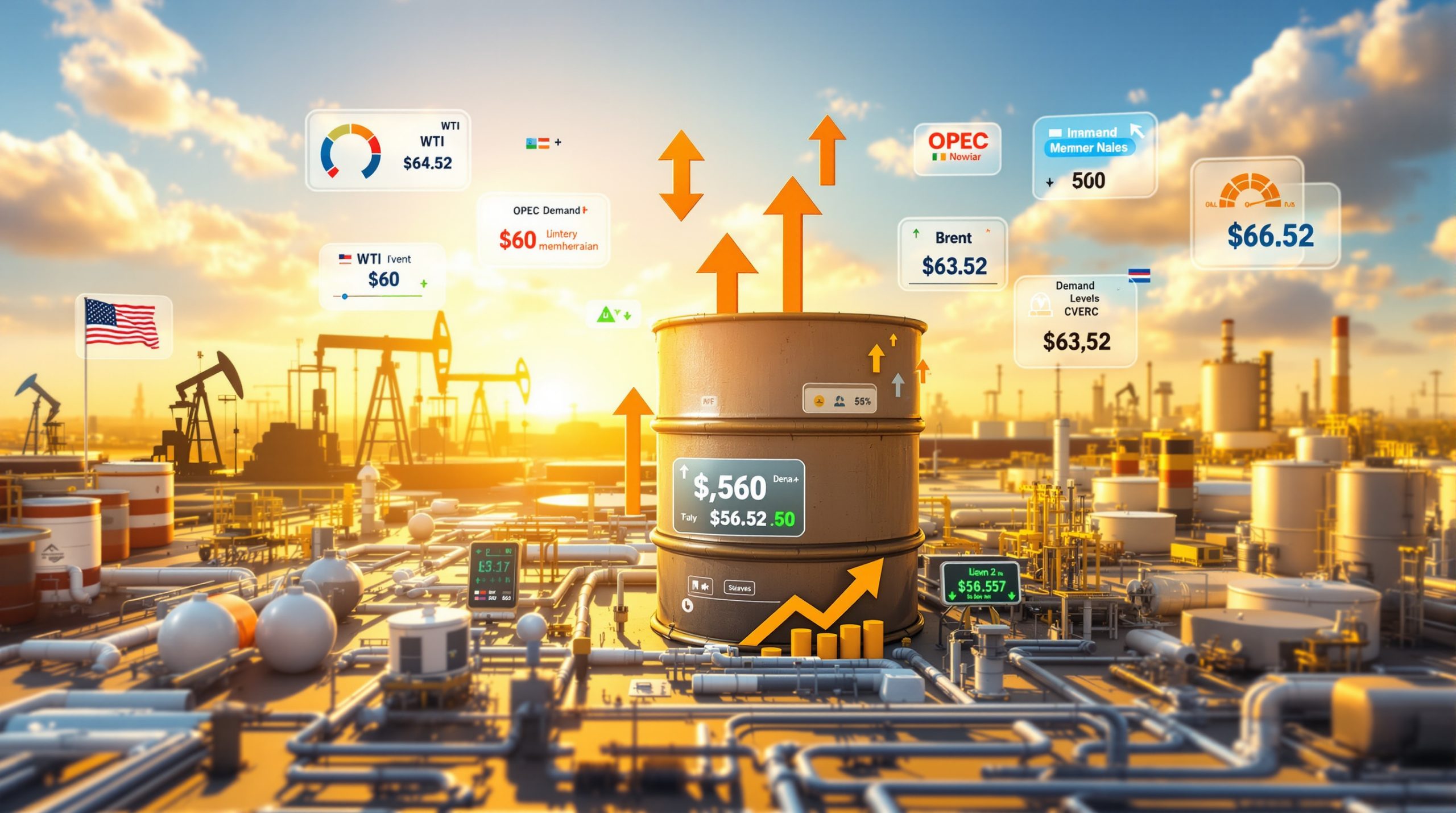What is Driving the ASX and Gold Rebound in 2025?
The Australian Securities Exchange (ASX) and gold markets are showing divergent trends, with precious metals outperforming the broader market. Understanding these movements requires examining both domestic and international factors affecting investor sentiment.
As we navigate through May 2025, gold prices have surged to near-record levels of US$3,328 per ounce, while the ASX200 maintains cautious momentum with a five-day gain of nearly 1%. This bifurcated performance highlights how different asset classes respond to the current mix of trade tensions, geopolitical uncertainties, and sector-specific dynamics.
How is the ASX Performing in May 2025?
Current Market Performance
The S&P/ASX200 experienced a slight decline of 10.9 points (0.13%) to 8,146.9 points in early trading on May 6, 2025. Despite this minor setback, the index has gained nearly 1% over the previous five trading sessions, indicating overall positive momentum.
This modest growth suggests investors remain cautiously optimistic about Australia's economic outlook, balancing positive commodity trends against global uncertainties. The market's resilience in maintaining gains from previous sessions demonstrates underlying strength despite day-to-day volatility.
Sector-by-Sector Analysis
The ASX's performance reveals significant sector divergence that provides insights into broader economic trends:
- Information technology led the decline with a substantial 1.13% drop, continuing a pattern of profit-taking after recent rallies
- Materials sector showed strength with a 0.44% increase, buoyed by rising commodity prices
- Energy sector gained 0.24%, reflecting stable global demand fundamentals
- Industrials edged up slightly by 0.05%, indicating modest confidence in infrastructure spending
- Utilities declined 0.18%, facing pressure from rising operational costs
- Six of eleven sectors were in negative territory, highlighting the selective nature of the current market environment
This sector disparity reflects how investors are reallocating capital based on shifting economic conditions and trade dynamics. Materials and energy stocks are benefiting from commodity strength, while technology shares face valuation pressures.
Understanding the ASX200 Index
The S&P/ASX200 represents Australia's premier market benchmark, tracking the performance of the 200 largest ASX-listed companies by float-adjusted market capitalization. This index accounts for approximately 80% of Australia's total equity market value and serves as the institutional investment benchmark for the country.
The index's composition underscores Australia's economic structure, with substantial weighting toward financial services, materials, and consumer sectors. This composition makes the ASX200 particularly sensitive to commodity cycles, banking performance, and domestic consumer sentiment – key factors driving current market movements.
Why is Gold Rebounding in 2025?
Current Gold Price Movements
Gold has staged a significant recovery following last week's selloff, reaching approximately US$3,328 (A$5,146) per ounce as of May 6, 2025. This rebound has positioned gold at near-record levels, benefiting mining companies across the Australian resources sector.
The precious metal's resilience demonstrates its enduring appeal during periods of economic uncertainty. After experiencing temporary weakness, gold prices have quickly recovered, reflecting strong underlying demand fundamentals and investor preference for tangible assets amid geopolitical turbulence.
Geopolitical Factors Driving Gold Prices
According to ANZ Senior Economist Adelaide Timbrell, gold's strong performance reflects persistent market concerns about global trade tensions, particularly those stemming from US trade policies. Despite President Trump's suggestion that his administration could finalize trade agreements with certain countries within the week, uncertainties remain regarding US-China relations.
"The ongoing ambiguity in US-China trade dialogue continues to support gold prices," notes Timbrell. "While we're seeing potential progress with nations like India, the lack of clarity on the world's two largest economies maintains gold's safe-haven appeal."
India's proposal for reciprocal zero tariffs on steel, auto parts, and pharmaceuticals signals shifting trade alliances, yet China's exclusion from immediate agreements continues to fuel market uncertainty – a key driver of gold's sustained strength.
Gold Mining Companies Leading the ASX
The gold price surge has created substantial gains for ASX-listed gold producers, with several companies experiencing significant share price appreciation:
- Ramelius Resources (ASX:RMS): Up 4.96% to $2.75
- West African Resources (ASX:WAF): Increased 4.82% to $2.39
- Evolution Mining (ASX:EVN): Advanced 4.56% to $8.49
- Vault Minerals (ASX:VAU): Gained 4.55% to $0.46
These impressive gains highlight how gold miners serve as leveraged plays on the underlying commodity. With production costs relatively stable, each dollar increase in gold prices flows directly to these companies' bottom lines, amplifying shareholder returns during bullish gold markets.
How Are US-China Trade Relations Affecting Commodity Markets?
Impact on Iron Ore Prices
Iron ore futures have climbed to US$96.40 per tonne, responding to President Trump's comments that business between the US and China has essentially halted. While China's direct reliance on the US as an export destination is relatively limited, analysts note that a broader global trade conflict could disrupt China's annual exports of 8-10 million tonnes to other international markets.
This potential disruption in global trade flows creates both risks and opportunities for Australian iron ore producers. While immediate demand from China for Australian iron ore remains stable, the secondary effects of Trump's commodity policies could reshape global commodity markets in ways that impact pricing power and market access.
China's Domestic Economic Stimulus
Market analysts suggest that iron ore prices are also finding support from expectations of additional economic stimulus measures from Beijing aimed at boosting domestic demand. These potential policy actions could help offset external trade pressures facing the Chinese economy.
"Chinese authorities are likely to implement infrastructure-focused stimulus to counterbalance export weaknesses," suggests Timbrell. "This approach would sustain demand for iron ore and other construction materials, benefiting Australian resource companies even amid global trade uncertainties."
The anticipated China stimulus impact represents a critical factor for ASX investors, potentially providing a floor for commodity prices even as geopolitical tensions persist. Infrastructure investment particularly drives demand for iron ore, copper, and construction materials – all significant Australian exports.
What Are the Key Indicators for ASX Investors to Watch?
Trade Negotiations Progress
The development of trade agreements between the US and other nations, such as India's proposal for zero tariffs on steel, auto parts, and pharmaceuticals, could significantly influence market sentiment in coming weeks.
Investors should monitor official statements, negotiation timelines, and implementation schedules for these agreements. Successful negotiations could stabilize markets, while delays or breakdowns may extend volatility and support safe-haven assets like gold.
China's Economic Policy Decisions
Potential stimulus measures from Chinese authorities represent a critical factor for resource-focused ASX companies, particularly those in the iron ore sector. The scale, timing, and focus of any stimulus package will have direct implications for commodity demand and pricing.
Key policy signals include:
- Central bank liquidity injections
- Infrastructure spending approvals
- Property market support measures
- Manufacturing incentives
- Consumer stimulus programs
These initiatives would have cascading effects through Australia's resource-heavy economy, potentially offsetting headwinds from global trade tensions.
Safe-Haven Investment Flows
Continued geopolitical uncertainties may sustain the flow of investment capital toward traditional safe-haven assets like gold, potentially extending the rally in precious metals prices.
Trading volumes, ETF inflows, and central bank gold purchases serve as leading indicators of this trend. Should institutional investors continue to allocate portfolio space to precious metals, the current gold market analysis suggests the strength could persist – further benefiting ASX-listed miners.
FAQ: ASX and Gold Market Trends
What factors are driving gold to record highs in 2025?
Gold's surge to record levels is primarily driven by geopolitical tensions, particularly trade uncertainties between major economies like the US and China. Investors are seeking safe-haven assets amid concerns about global economic stability and potential trade disruptions.
Additional factors supporting gold include:
- Persistent inflation concerns in developed economies
- Portfolio diversification away from traditional equities
- Central bank purchasing programs expanding global reserves
- Supply constraints from major producing regions
- Growing industrial and jewelry demand from emerging markets
This perfect storm of demand drivers, coupled with supply limitations, has created the foundation for gold's impressive price appreciation.
How does the ASX200 compare to other global indices in 2025?
While the ASX and gold rebound has shown resilience with a nearly 1% gain over five trading sessions, its performance should be evaluated against major international benchmarks like the S&P 500, FTSE 100, and Nikkei 225 to understand relative strength in the global context.
The ASX200's resource-heavy composition provides both advantages and challenges in the current environment. While commodity strength supports materials stocks, the index's relatively lower exposure to cutting-edge technology and healthcare innovation may limit overall performance compared to some international peers.
Which ASX sectors are best positioned to benefit from current market conditions?
Materials and energy sectors are demonstrating relative strength in the current environment, with gold miners particularly well-positioned to capitalize on rising precious metal prices. Companies with exposure to commodities in demand for infrastructure development may also see continued support.
Beyond these obvious beneficiaries, defensive sectors with strong dividend yields may attract investors seeking income security amid uncertainty. Furthermore, investors increasingly look toward mining stocks guide resources to understand which companies might outperform amid resource-sector volatility.
How might US-China trade tensions impact Australian resource exports?
While Australia's resource exports to China could face indirect pressure from broader trade tensions, the potential for increased Chinese domestic stimulus measures may offset some negative impacts by supporting demand for key Australian exports like iron ore.
Australia's position as a reliable supplier of critical raw materials positions it favorably even during trade disputes between other major economies. However, potential supply chain realignments and trade diversion could create longer-term structural changes in global commodities insights that require strategic adaptation by Australian exporters.
Disclaimer
This analysis contains forward-looking statements and market forecasts that involve inherent risks and uncertainties. Actual market developments may differ materially from those anticipated. Investors should conduct their own research and consult financial advisors before making investment decisions based on information presented in this report.
Want to Spot Major Mineral Discoveries Before the Market?
Discover why significant mineral finds can deliver exceptional market returns by exploring Discovery Alert's dedicated discoveries page, where real-time alerts powered by the proprietary Discovery IQ model help investors capitalise on ASX announcements before the broader market reacts. Begin your 30-day free trial today at https://discoveryalert.com.au/discoveries/ to position yourself at the forefront of resource investment opportunities.




